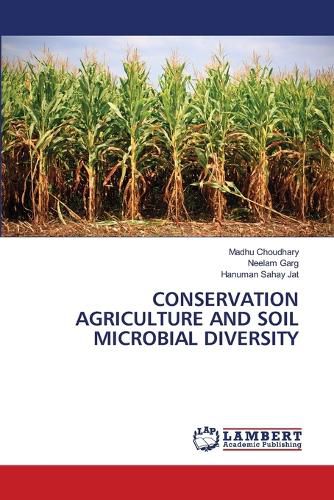Readings Newsletter
Become a Readings Member to make your shopping experience even easier.
Sign in or sign up for free!
You’re not far away from qualifying for FREE standard shipping within Australia
You’ve qualified for FREE standard shipping within Australia
The cart is loading…






In situ burning of crop residues being practiced by majority of farmers' in NW India deteriorates the soil and environmental quality. Fungi have the potential for lignocellulose degradation and can be used for the in-situ decomposition of crop residues. Fungal species viz., Aspergillus terreus, A. flavus, A. niger and Penicillium janthinellum were isolated and evaluated based on the activity of lignocellulolytic enzymes for crop residue degradation potential. A. flavus and A. terreus showed 30% degradation of residue after 10 days of incubation and these fungi did not show any side effect on wheat crop growth under field condition. Fungal diversity was found to increase with CA- based management practices, maximum sequences of phylum were in order of Ascomycota> Basidiomycota> Glomeromycota. However, Alternaria, Cercophora and Epicoccum were most abundant fungal genera. At phylum level, relative abundance of Ascomycota ranged from 55 to 74%, with the highest dominance recorded in CA based maize systems (maize-wheat-mungbean) and lowest with conventional rice-wheat, however at class level Sordariomycetes had the highest abundance followed by Dothideomycetes and Eurotiomycetes.
$9.00 standard shipping within Australia
FREE standard shipping within Australia for orders over $100.00
Express & International shipping calculated at checkout
In situ burning of crop residues being practiced by majority of farmers' in NW India deteriorates the soil and environmental quality. Fungi have the potential for lignocellulose degradation and can be used for the in-situ decomposition of crop residues. Fungal species viz., Aspergillus terreus, A. flavus, A. niger and Penicillium janthinellum were isolated and evaluated based on the activity of lignocellulolytic enzymes for crop residue degradation potential. A. flavus and A. terreus showed 30% degradation of residue after 10 days of incubation and these fungi did not show any side effect on wheat crop growth under field condition. Fungal diversity was found to increase with CA- based management practices, maximum sequences of phylum were in order of Ascomycota> Basidiomycota> Glomeromycota. However, Alternaria, Cercophora and Epicoccum were most abundant fungal genera. At phylum level, relative abundance of Ascomycota ranged from 55 to 74%, with the highest dominance recorded in CA based maize systems (maize-wheat-mungbean) and lowest with conventional rice-wheat, however at class level Sordariomycetes had the highest abundance followed by Dothideomycetes and Eurotiomycetes.